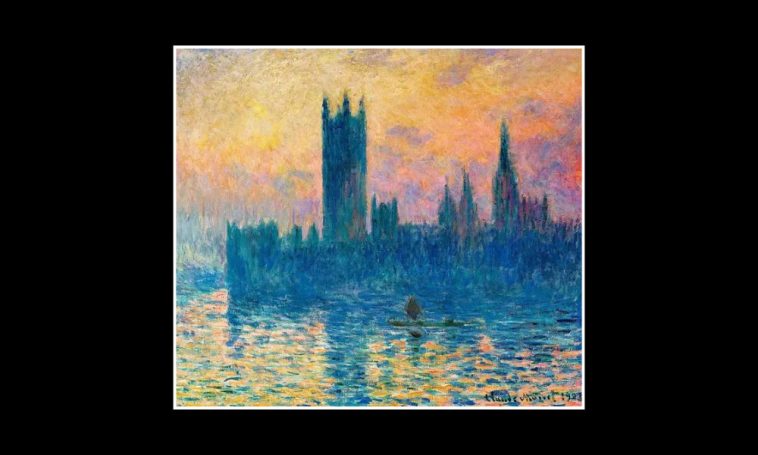The works depicting the sunset are not only a view of nature, but also reveal the inner worlds of the artists, the mood of the period and the aesthetic perception of the society.
That magical moment that paints the sky a fiery red every evening, envelops our soul with serenity and reminds us sometimes of sadness and sometimes of hope… Sunset. In the most unforgettable works of art history, the setting of the sun is not only a natural phenomenon, but also a storyteller that stretches into eternity with the brushstrokes of painters. From Claude Monet’s play of colours to Caspar David Friedrich’s melancholy, from Vincent van Gogh’s euphoric hues to JMW Turner’s dramatic landscapes, sunset has left a different mark on the heart of every painter. Let’s take a journey through the most famous paintings immortalising these magical moments. Close your eyes and get ready to get lost in these canvases illuminated by the last rays of the sun! Here are the most famous sunset paintings…
San Giorgio Maggiore at Twilight – Claude Monet
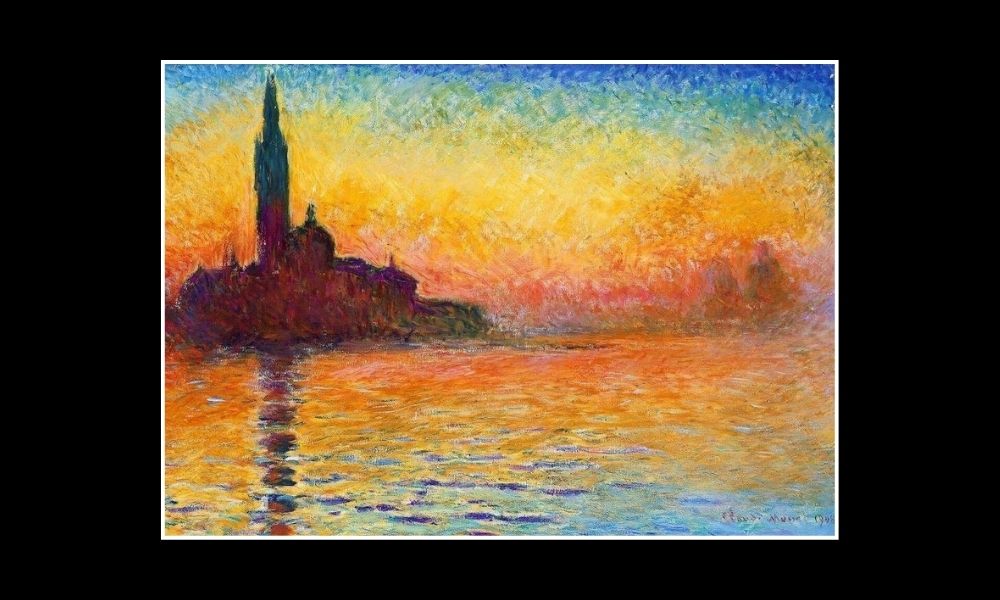
We are starting our most famous sunset paintings article. Claude Monet is considered to be the pioneer of the Impressionism movement and one of the most powerful representatives of this movement. Monet, referred to as the ‘father of Impressionism’ by art historians and critics, is a master of light and colour. In his works, he skilfully reflected how the sunlight appears from different angles and how it reflects on surfaces.
San Giorgio Maggiore at Dusk is an important work that coincides with the last period of Monet’s career and reinforces his mastery. Completed in 1912, this work presents the viewer with a warm, mesmerising sunset scene.
Evening Landscape with Two Men – Caspar David Friedrich
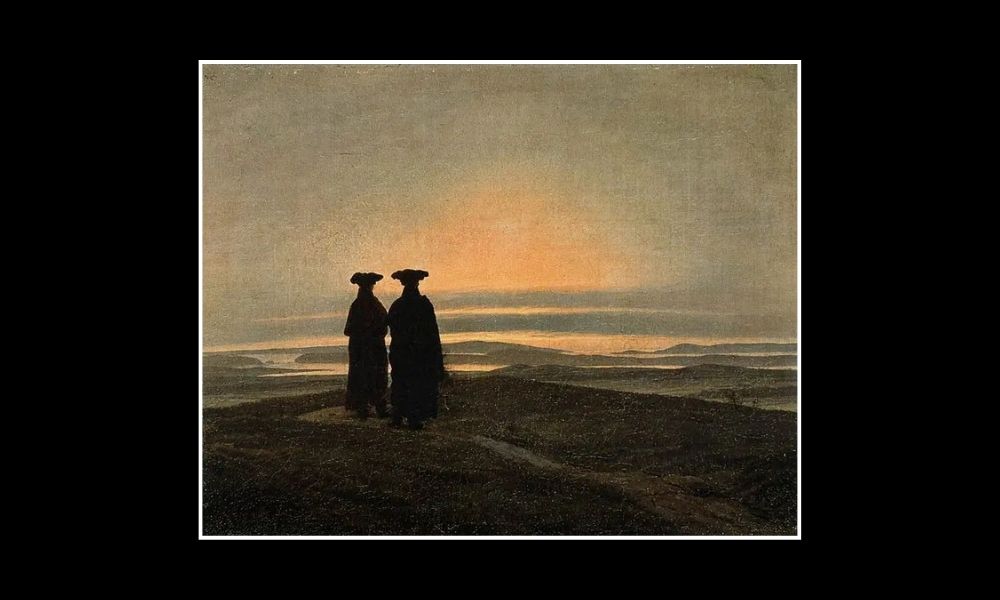
German painter Caspar David Friedrich is one of the leading figures of 18th and 19th century German Romanticism. Friedrich is known for his works depicting the splendour of nature and the loneliness of man in the face of this splendour. In his works, nature is often depicted as an element that envelops man and encourages him to think.
Evening Landscape with Two Men is one of Friedrich’s most important works, completed between 1830 and 1835. This painting depicts two men watching the sunset in the German countryside. The dense clouds used by the painter hide the brightness of the sun and leave only a glow. This glow spreads towards the horizon and evokes a melancholic feeling in the viewer.
Fighting Temeraire – JMW Turner
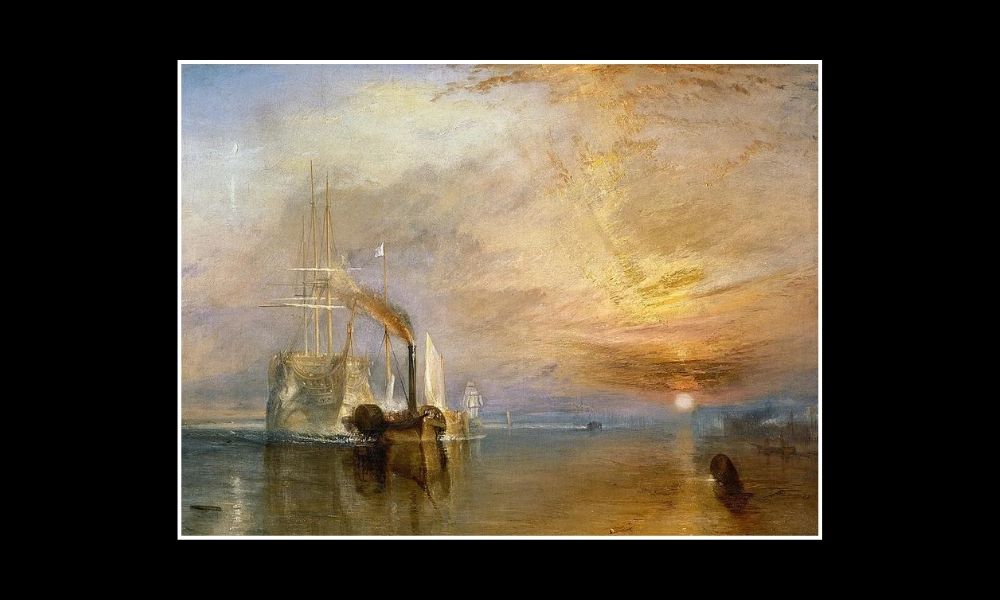
British painter JMW Turner is an artist known for his maritime-themed works and his play of light. In his paintings, Turner skilfully depicted the power of nature and the helplessness of man in the face of this power.
The Fighting Temeraire, Tugged to Her Last Berth to be Broken Up, painted by Turner in 1839, has become one of the symbols of the British navy. It depicts the last voyage of the once magnificent warship Temeraire to be scrapped.
The ship is being towed to the shore by a small steam tug. The elegance of the Temeraire stands out both marvellously and sadly next to this small and functional tug. The ship was portrayed as a symbol of England’s supremacy at sea and the end of an era.
Angelus – Jean-François Millet
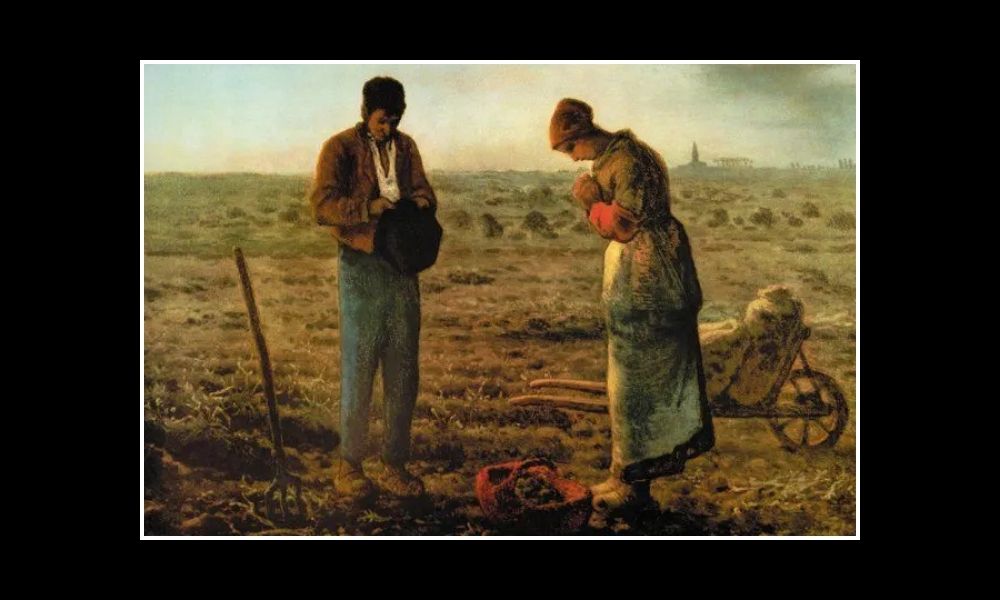
Jean-François Millet is one of the leading figures of the French Realism movement. Millet’s works focus on the struggle of ordinary people and their lives intertwined with nature.
Angelus is one of his works, which he completed between 1857-1859 and reveals the life of lower class peasants. The painting shows a couple standing in the field at sunset. The man and woman join their hands in prayer and look at the earth. This scene is a reflection of both the serenity of the sunset and the couple’s struggle for life.
Millet skillfully uses light and colours in this work, evoking a strong sense of empathy in the viewer. The silence in the field symbolises the praying couple’s search for hope in despair.
Ninth Wave – Ivan Aivazovsky
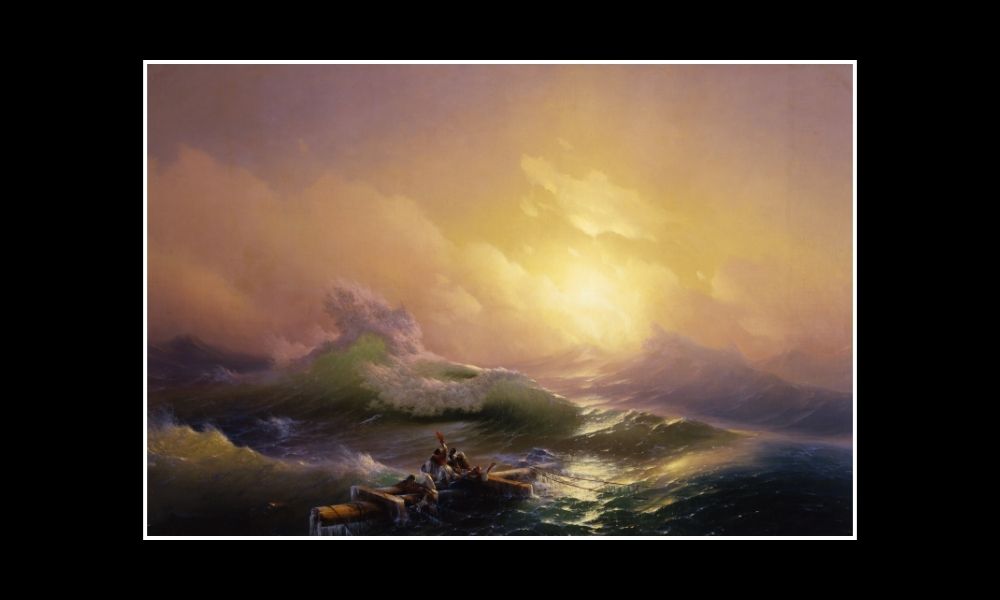
Russian painter Ivan Aivazovsky gained fame with his works depicting sea scenes and the life of sailors. The Ninth Wave is one of his most well-known works.
This painting was painted in 1850 and dramatically reflects the raging waves of the sea and the desperation of the sailors. In the painting, several sailors who have survived a shipwreck are struggling to survive amidst the huge waves. As the sun sets, the warm colour tones echoing over the water make you feel both the splendour of nature and the despair of people at the same time.
Red Vineyard in Arles – Vincent van Gogh
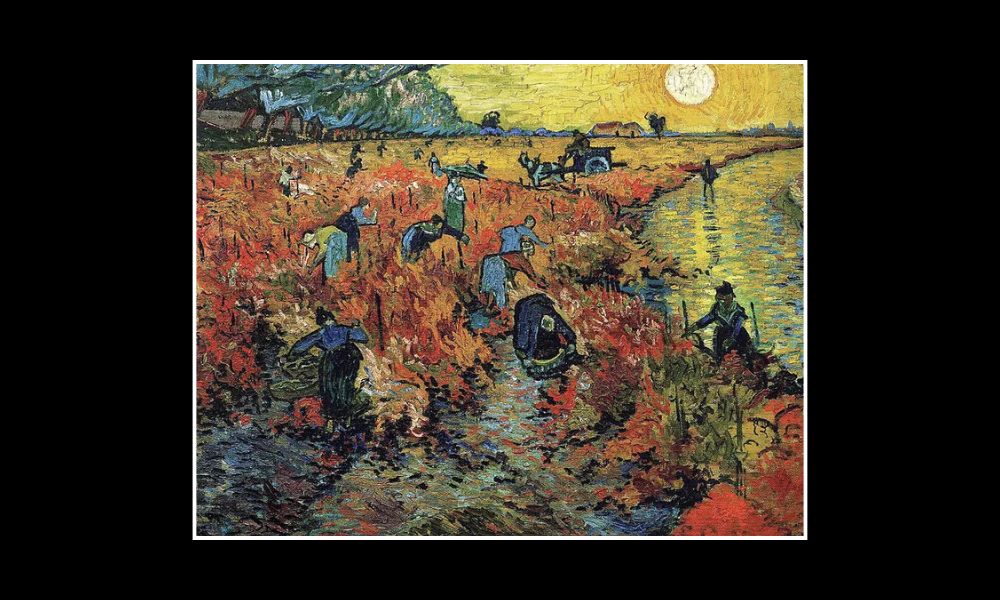
Vincent van Gogh is one of the most important and tragic figures in the history of art. Having sold only one painting in his lifetime, van Gogh nevertheless became one of the world’s most recognised painters after his death.
The Red Vineyard in Arles, painted in 1888 during van Gogh’s stay in Arles, was the only painting he was able to sell during his lifetime. This work reveals how the golden and red tones of the sunset are reflected in the vineyards.
In this painting, van Gogh masterfully uses both the play of light and vibrant colours to create a mesmerising atmosphere. As the workers in the fields work under the hot sun, van Gogh’s powerful brushstrokes and dynamic use of colour give the painting a sense of movement. We continue our article on the most famous sunset paintings.
Sunset in Eragny – Camille Pissarro
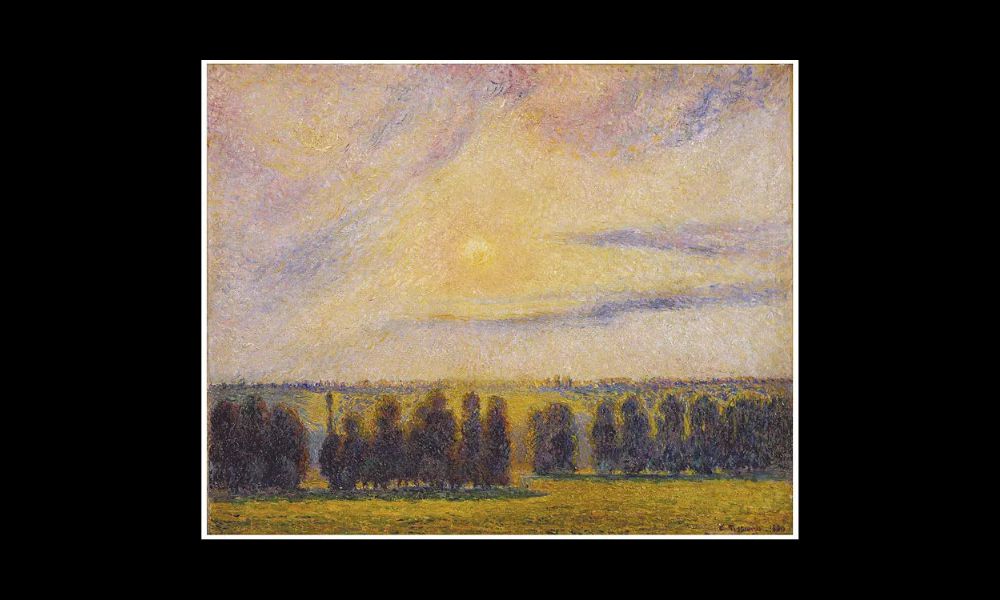
Camille Pissarro is considered one of the pioneers of the Impressionism movement. The artist attached great importance to capturing the changing colours of nature, the effects of light and the transient moments of the landscape. For this reason, he worked outdoors and produced works through direct observation.
Camille Pissarro completed Sunset at Eragny in 1890. In this work, Pissarro aimed to capture the impressive beauty of the sunset lasting only a few minutes. As the brightness of the sun gradually gives way to twilight in the sky, there are marked contrasts between the colours in nature. This painting shows how Pissarro’s light shapes nature and how it can create great changes in a period of a few minutes.
Sunset in the Rockies – Albert Bierstadt
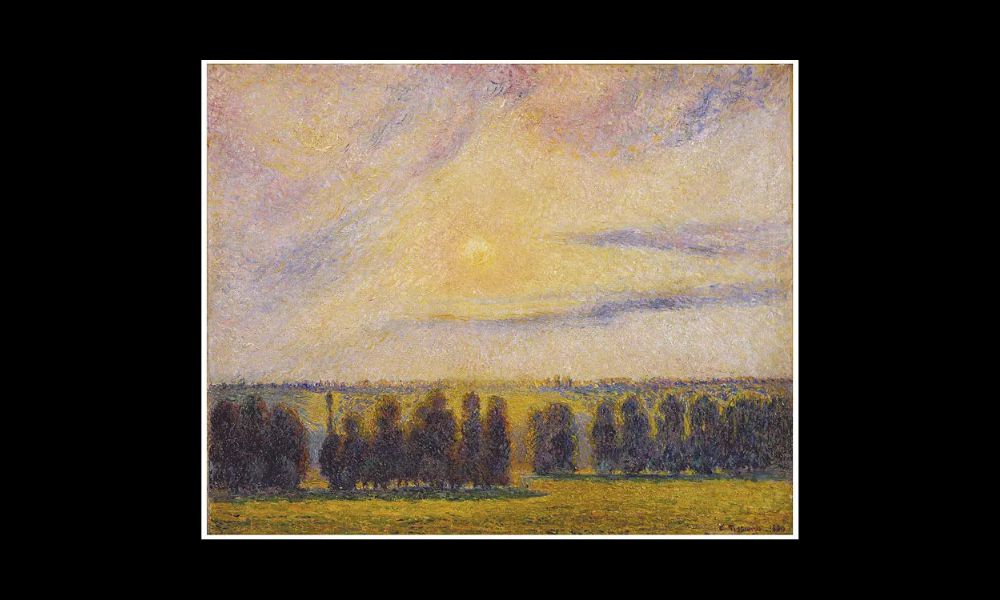
Albert Bierstadt was an artist who specialised in painting sunsets. He particularly emphasised the effects of sunlight in his depictions of the wilderness, vast landscapes and majestic mountains of the American West.
His 1866 work Sunset in the Rockies is one of Bierstadt’s most famous works. This painting offers viewers a mesmerising view of the Rocky Mountains. The artist skilfully depicted the effect of the golden sunlight on the mountains and the warm tones spreading over the river valley. At the time, the American West was still considered an unexplored and mysterious region. Bierstadt’s work succeeded in conveying the beauty of the West and the splendour of nature to the art lovers of the East.
Twilight Mount Desert Island, Maine – Frederic Edwin Church
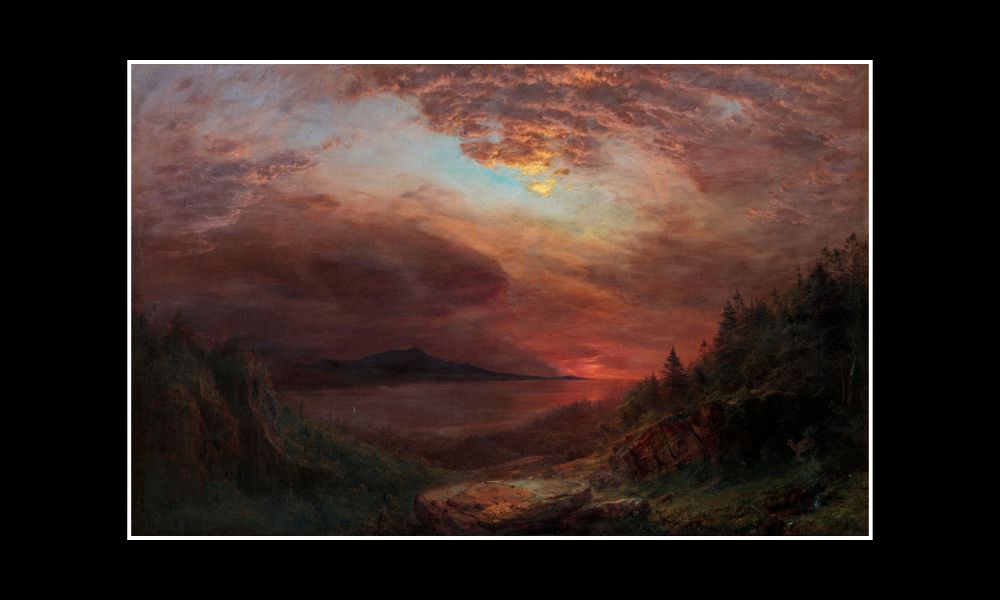
Frederic Edwin Church is known for painting American landscapes with extraordinary detail. An important member of the Hudson River School, Church conveyed the splendour of nature, the play of light and the magic of atmosphere in his works.
Church completed his painting Twilight Mount Desert Island, Maine in 1865. This work depicts the rocky coast of Maine, coniferous trees and the deep red glow of the sunset on the horizon. The artist reflects the contrast between darkness and light that occurs with the setting of the sun with a dramatic effect. The period when this work was created coincides with the end of the American Civil War, and this gloomy atmosphere is reflected in the painting. We continue our article on the most famous sunset paintings.
The Houses of Parliament, Sunset – Claude Monet
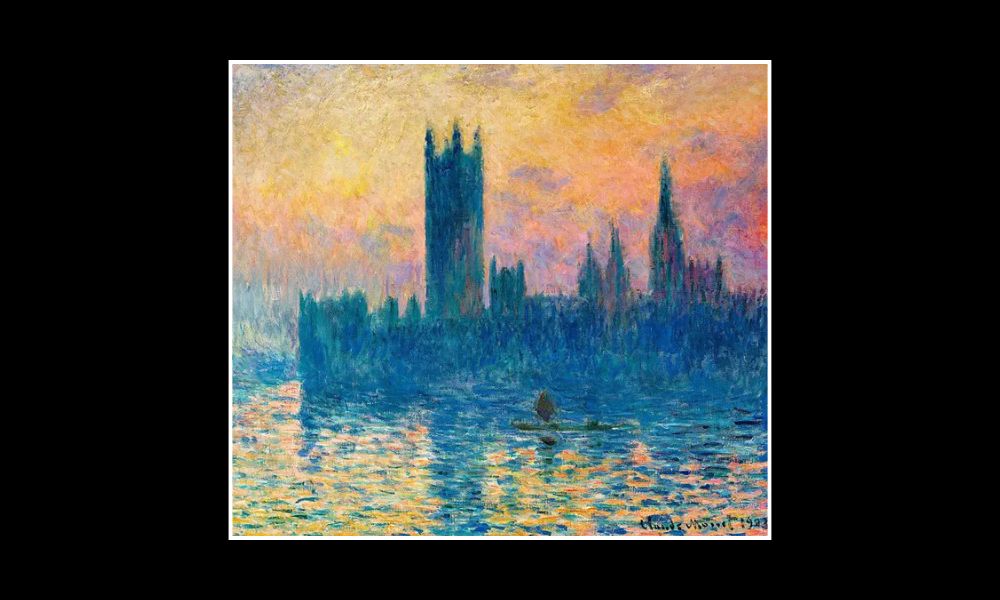
Claude Monet, one of the pioneers of the Impressionist period, took great pleasure in studying the effects of light on nature at different times and in different weather conditions. In the early 20th century, Monet spent some time in London, where he focused on painting famous landmarks.
The artist painted The Houses of Parliament, Sunset in 1904. Located on the banks of the River Thames, the Houses of Parliament under dense fog attracted Monet’s attention. While the sun is barely distinguishable behind the fog, the silhouette of the building and the slightly vibrating reflections on the river reveal Monet’s mastery of the play of colour and light. Monet produced many works from the same perspective in different light and weather conditions, analysing the effects of sunset in different time periods and presenting them to the audience.
Sunset in Brière – Ferdinand du Puigaudeau
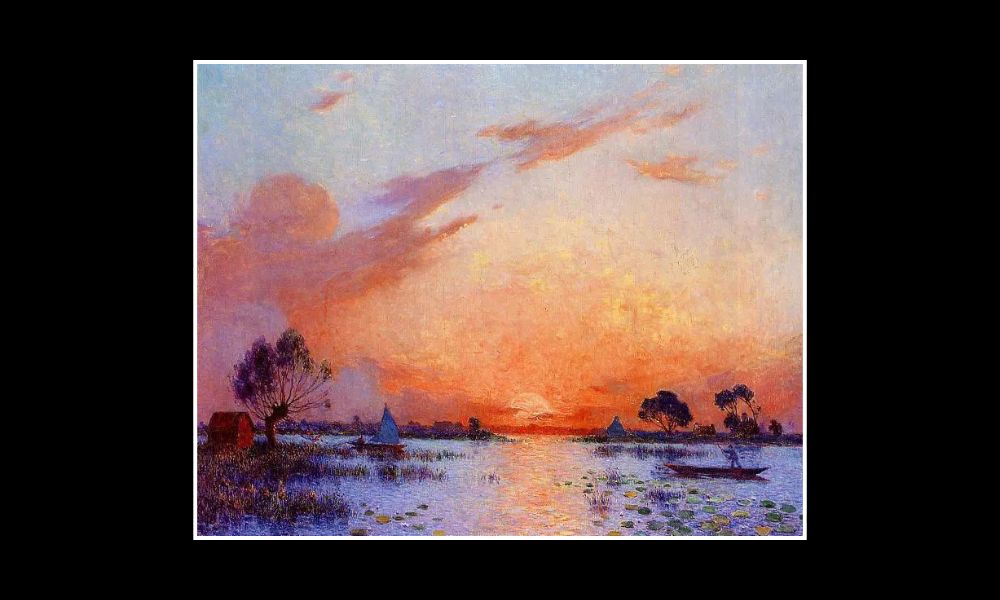
Ferdinand du Puigaudeau is one of the unforgettable names of French art. The artist especially preferred to paint scenes in the Breton region. Sunset in Brière is one of Puigaudeau’s works that reveals his mastery of light and colour. The artist used warm tones and deep contrasts to capture the mesmerising atmosphere created by the sunset. By depicting the reflections of light on the surface of the water and how the last rays of the sun affect the surrounding nature, Puigaudeau presents the viewer with a peaceful landscape.
A Hayfield near East Bergholt at Sunset – John Constable
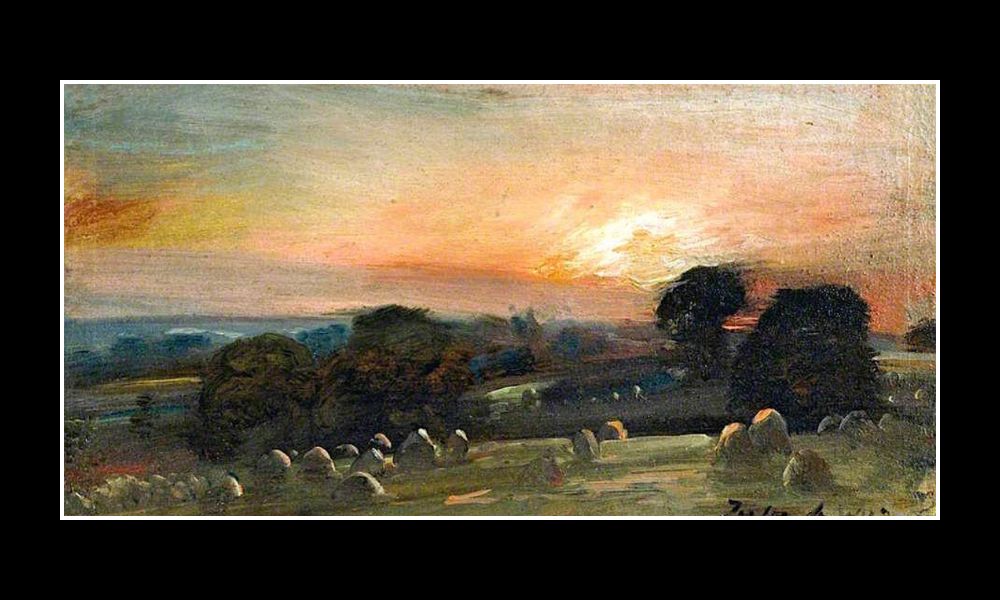
John Constable, one of the painters of the English Romantic period, devoted his life to painting Dedham Vale, the region where he was born. The Suffolk-born artist emphasised naturalism and realism in landscape painting.
A Hayfield near East Bergholt at Sunset reflects Constable’s love of nature and his devotion to the region. In this work, the artist combined the riot of colours in the sky at sunset with the golden light on the fields. Constable succeeded in making the viewer feel the serenity and peace of nature.
Twilight in the Wilderness – Frederic Edwin Church

We have come to the end of our most famous sunset paintings article. Frederic Edwin Church is an artist who exhibits the natural world in all its splendour in his landscape paintings. Completed in 1860, Twilight in the Wilderness depicts a wooded area in Maine.
It depicts in detail the vibrant colours of the altocumulus clouds at sunset and the clouds floating in the sky. Church depicted the mystical atmosphere created by the sunset, emphasising the infinity and mesmerising beauty of nature.
This work is also a nod to the English landscape artist JMW Turner. Church reinterpreted the detail and dramatic atmosphere of Turner’s depictions of nature in his own style and presented the viewer with a unique sunset view.
